King Harald’s Courtship—The Battle of Hafrsfjord—Norway United under one King—Emigration of the Discontented—Settlement in Iceland—The Cruise of Gange-Rolf—Northmen settle in Normandy—King Harald’s Sons—Death of King Harald
Harald was only ten years old when he succeeded his father. Many of the chiefs thought that it would be an easy matter now to divide the country between them, but Guthorm, a brother of Harald’s mother, who was at the head of the government and commander of the army, soon subdued them.
When Harald had become old enough to marry, he sent his men to a girl named Gyda, a daughter of King Erik of Hordaland, who was brought up as a foster-child in the house of a rich Bonde in Valders. Harald had heard of her as a very beautiful though proud girl. When the men delivered their message, she answered that she would not marry a king who had no greater kingdom than a few Fylkis (districts), and she added that she thought it strange “that no king here in Norway will make the whole country subject to him, in the same way as Gorm the Old did in Denmark, or Erik at Upsala.” When the messengers returned to the king, they advised him to punish her for her haughty words, but Harald said she had spoken well, and he made the solemn vow not to cut or comb his hair until he had subdued the whole of Norway and had become the sole king.
Harald immediately gathered an army and went northward over the Dovre Mountain, and after several battles conquered the whole of Trondelag, the common name of all the districts about the Throndhjem (Drontheim) Fjord. Here he procured ships, sailed southward along the coast and conquered one district after another in the western part of the country. Finally, the remaining kings gathered their men and ships and met Harald in naval battle in Hafrsfjord, a little inlet in Jæderen, near the present city of Stavanger. The battle was fierce and long, but Harald finally gained the day. After this battle, which occurred in 872, King Harald met no opposition, and was acknowledged as king of the whole of Norway. Shortly after the battle the king attended a feast given by Ragnvald, the Earl of More (Morejarl), and the latter cut the king’s hair, which had not been cut or combed for ten years, and gave him the surname, the Fairhaired. Harald shortly afterward married Gyda.
King Harald deprived the peasant-proprietors of their allodium or udal-right, and compelled them to pay land dues of their possessions. Over every Fylki or district he placed an earl (jarl), who was to administer justice and collect the taxes, of which he retained one-third as salary. In case of war the earl was to serve the king with sixty warriors. Each earl had under him four herses, each of whom had a royal estate of twenty marks annual income to manage, and was bound to support twenty men-at-arms.
Many of the proud peasants objected to the rule of Harald and to the payment of taxes. They wanted to be independent, as before, and left the country. Many of them settled on the Faroe Islands and the Scotch islands, and in the summer they would make viking cruises and harry the coasts of Norway to revenge themselves on the king. To stop this Harald sailed westward one summer with a fleet, fought the vikings and took possession of Shetland and the Orkney Islands, and placed an earl in charge of them. Many of the fleeing Northmen then sailed northward with their goods and men and settled in Iceland, where they established a free state, which existed for nearly 400 years.
Earl Ragnvald (Morejarl) was King Harald’s dearest friend, and the king had great regard for him, but he did not allow that to excuse a crime committed by his son. Ragnvald had a son by the name of Rolf, who was so stout and strong that no horse could carry him, and therefore he was called Gange-Rolf, or Rolf the Walker. He went early on viking cruises to the shores of the Baltic Sea. One summer, on his return from one of his expeditions, he made strand-hug in Viken. (Strand-hug was a foray for cattle to provision the viking ships.) Harald had declared this a great crime, and when he heard what Rolf had done, he called an extra session of the Thing, and had Rolf declared an outlaw in all Norway. Gange-Rolf, however, did not remain in Norway, but sailed westward to the Sudreys, the present Hebrides, and afterward joined the army of vikings, which, in the year 885, went to France and plundered the country around Paris and the province of Bourgogne. The Frenchmen made a compromise with the vikings, and for some years they spared the French coasts, but later Gange-Rolf returned with a great number of vikings, and finally compelled the French king, Charles the Simple, by the peace of Saint-Clair-sur-Epte to cede to him and his successors a large province, which he peopled with Northmen, and which, therefore, was afterward called Normandy. The French king also promised to let him marry his daughter Gizela if he would adopt Christianity. This Rolf agreed to, and he was baptized in the year 912, being christened Robert. He ruled his new country well, and died in the year 931. From him descended the mighty earls of Normandy, who in time conquered the kingdoms of England and Naples.
King Harald had many sons, and as they grew up they created a great deal of disturbance in the country. They had come from such different stock on the maternal side, and had been brought up so far from each other by rich peasants in different parts of the country, that brotherly feelings were little known to them. They became jealous of each other, and also jealous of the many mighty earls. They drove some of the earls from their estates, and even killed some of them. Thus two of the brothers set out one spring with a great force to attack Ragnvald, Earl of More, surrounded his house and burned him with sixty of his men.
Hoping to avoid further domestic disturbances, Harald called together a Thing at the Eidsiva Thing-place (the present Eidsvold), and summoned to it all the people of the Uplands. Here he gave to all his sons the title of king, and proclaimed a law that his descendants in the male line should each succeed to the title and dignity of king; but his descendants by the female side were to become only earls. He divided the country among his sons, but his dearest son, Erik, who was his son by the Danish Princess Ragnhild, and thus of royal birth on both sides, was to be acknowledged as their overlord. This the other brothers did not like, and the result was bloody conflicts. Erik first killed Ragnvald Rettilbeine, the ruler in Hadeland, because he was said to be a sorcerer. Next he attacked his brother Biorn, who generally lived at the trading-place Tunsberg, and who was called Biorn Farmand, or Biorn the Merchant, because he cared little for war, but more for trading expeditions. As he refused to pay tribute to Erik, the latter attacked and killed him, and plundered his house. King Biorn lies buried in the Seaman’s Mound (Farmandshaugen) at Sæheim (in the present Sem’s parish) in Jarlsberg. Halfdan the Black, who ruled in Throndhjem, resolved to avenge his brother Biorn’s death, and collected a great force of men and ships. Erik sought the aid of his father Harald, who also equipped a fleet and took up a position at Rein-plain on the north side of the Throndhjem Fjord; but now friends of both interceded in order to bring about a reconciliation. In Halfdan’s army there was a clever man called Guthorm Sindre, who had formerly been in the service of Harald, and was a great friend of both. He was a great skald (poet), and had once composed songs about the father and the son, for which they had then offered him a reward. He would take nothing at the time, but was given the promise that, some day or other, they should grant him any request he should make. He now went before King Harald with words of peace, and made the request that the kings should become reconciled. And the Saga adds: “So highly did the king esteem him that, in consequence of his request, they were reconciled.”
When Harald the Fairhaired was eighty years old, he became very weak and unable to bear the burden of the government. Then he brought his son Erik to his royal high-seat and gave him the power and the command over the whole land (930). Three years later King Harald died of old age. He was buried under a mound at Hauge, near Haugesund in Ryfylke. The gravestone is still to be seen. At the grave a large monument in memory of Harald was erected in 1872, one thousand years after the battle of Hafrsfjord.
Read next: Birth of Haakon the Good—Erik Blood-Axe (930-935)
Author: Sigvart Sörensen


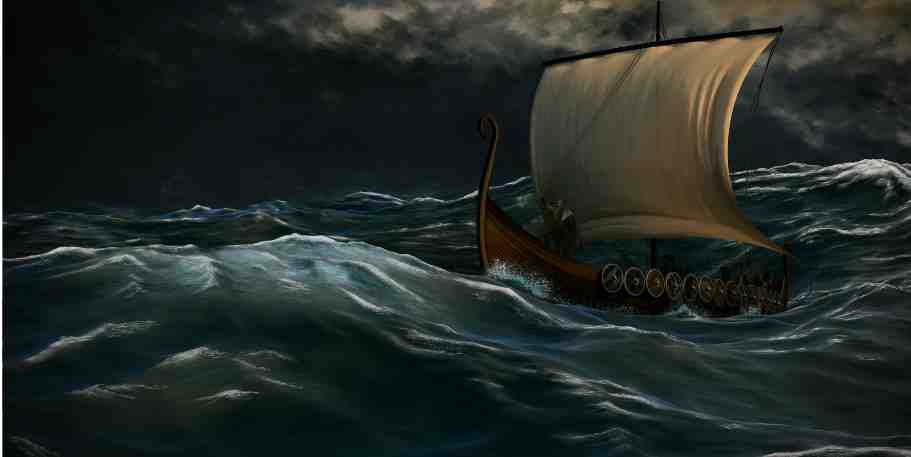


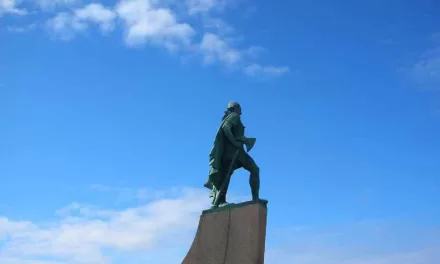
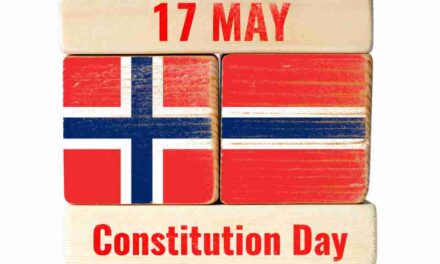









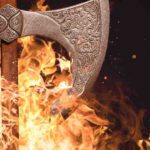
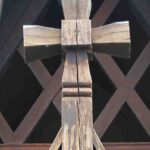
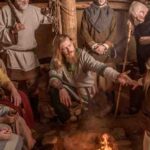


Trackbacks/Pingbacks